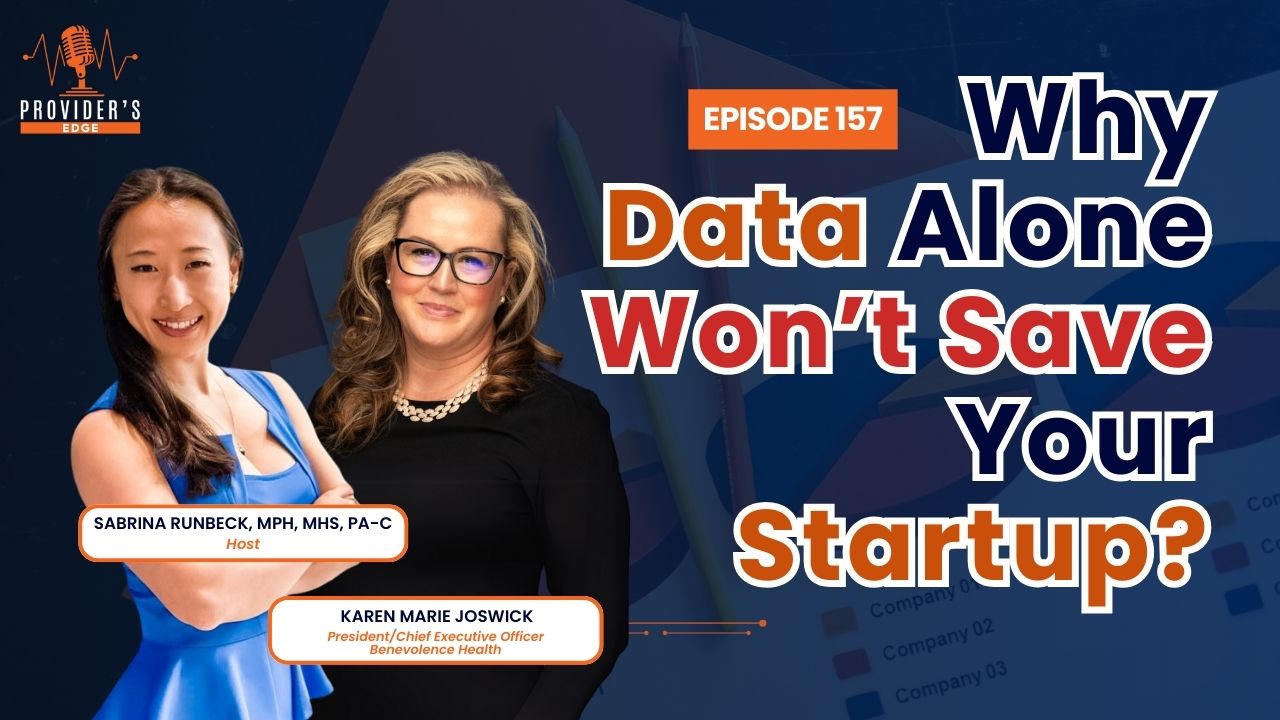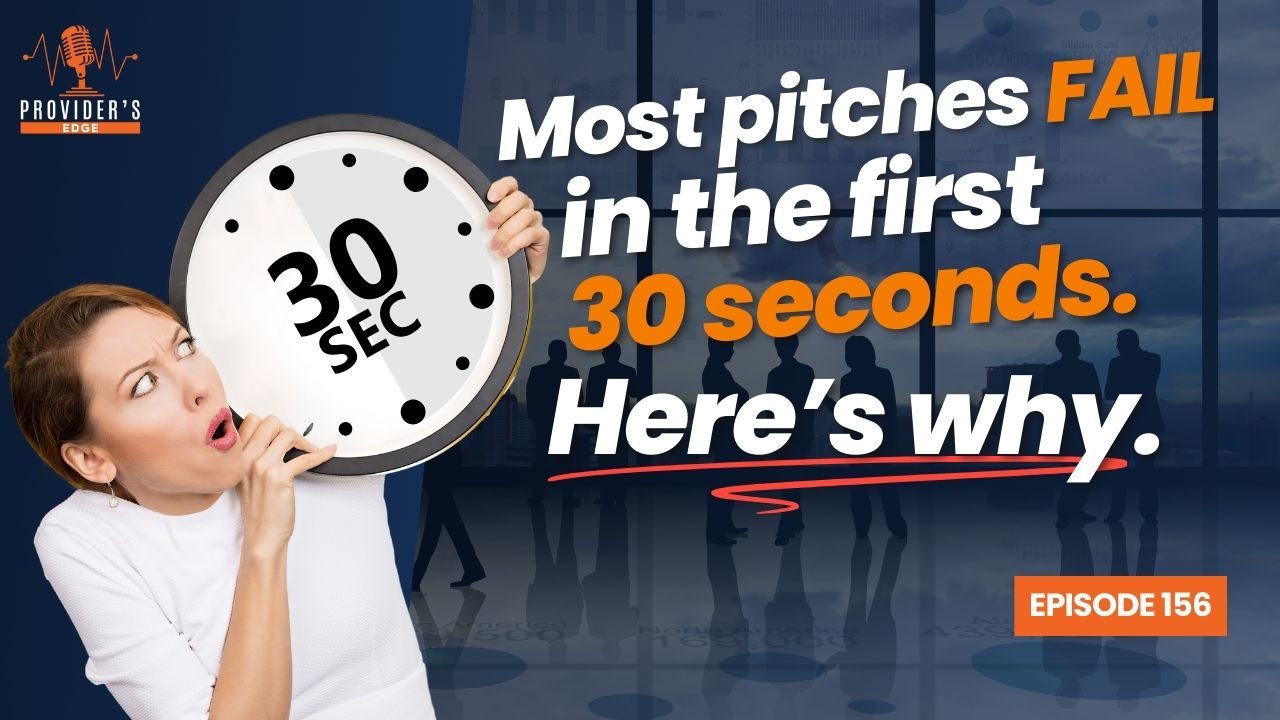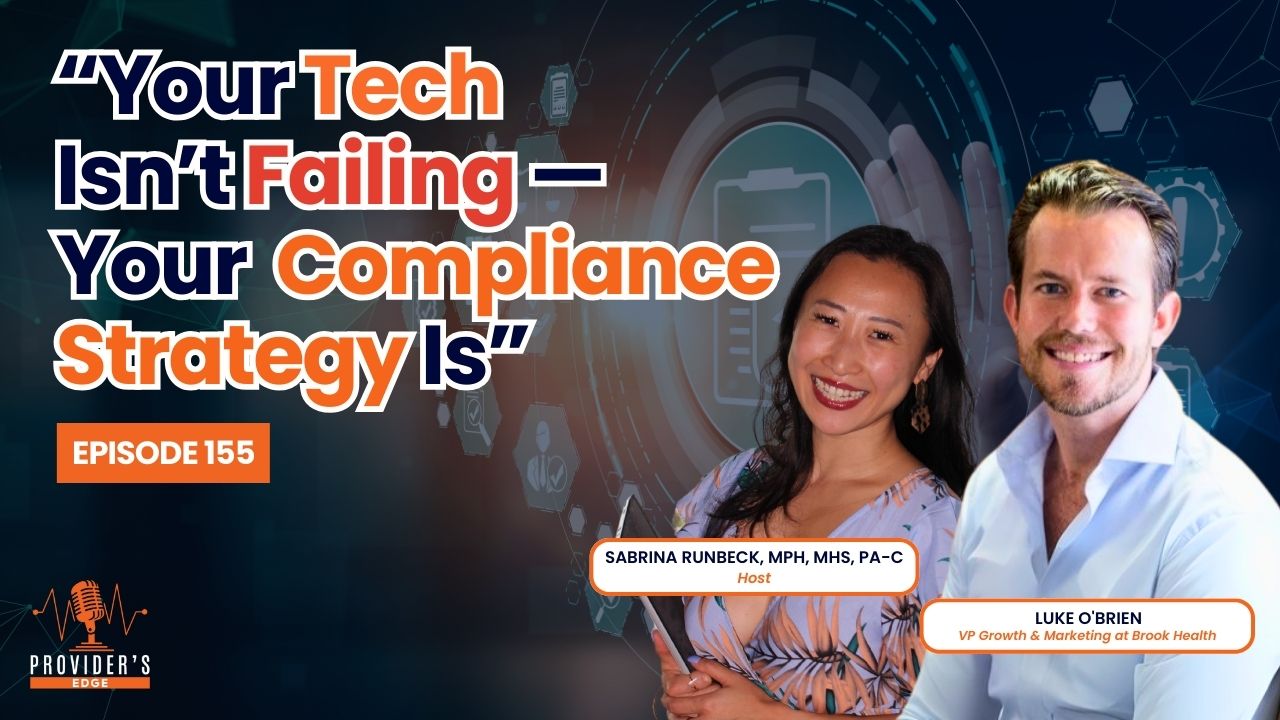
Why Workflow-First Innovation
Is Winning in Value-Based Care
Investors are missing out on scalable returns in one of healthcare’s most fragmented spaces: post-acute care.
But the winners won’t be those with flashy features—they’ll be the ones who own the workflow.
You’ve seen it before.
A HealthTech founder walks into a pitch with sleek visuals, AI-powered logic, a growth slide that looks like it’s on steroids—and a product demo that leaves you nodding.
But six months later, it’s stuck in pilot limbo. The provider’s overwhelmed. The product’s underused. The outcomes aren’t flowing.
Why? Because value-based care doesn’t reward flashy. It rewards functionality.
And in today’s cost-constrained, regulation-heavy, workforce-depleted system, that means one thing:
The future of health innovation belongs to those who integrate, not interrupt.
Listen anywhere you get your podcastin' on.
Live Interview

? Post-Acute Care: The Fragmented Frontier Investors Should Be Eyeing
Let’s get real. Post-acute care isn’t a spotlight-grabbing category. It's messy, it’s manual, and it’s riddled with faxes, PDFs, and fragmented responsibility.
But it’s also where:
- Readmissions spike (costing the system billions)
- Patients drop off (aftercare support is spotty at best)
- Reimbursement penalties hit hardest
This is what I shared during my interview with Karen Josswick at the PointClickCare Summit:
“If your HealthTech solution doesn’t translate into smoother care transitions, clearer workflows, and actual provider action… you’re not in the business of transformation—you’re in the business of observation.”
Let that sink in.
The real bottleneck in scaling digital health isn’t about innovation—it’s about execution across disconnected endpoints.
And that’s exactly what workflow-first companies are solving.
? What Workflow-First Actually Means (and Why Investors Should Care)
Let’s define it clearly:
Workflow-first innovation prioritizes integration with existing clinical operations, care team capacity, and user behavior over net-new system disruption.
Here’s what it doesn’t mean:
- Adding another dashboard
- Offering “plug-and-play” without clinical input
- Building around venture hype instead of frontline friction
Investors should be asking:
- Does this company understand how care teams work today, not how they should work?
- Can this solution embed into EMRs, care plans, or population health workflows without increasing clinical burden?
- Is there a clear map from insight to action?
? Why It Wins in Value-Based Models
In value-based care, the goal is not just to treat. It’s to improve outcomes at lower cost.
Which means:
- Preventing readmissions
- Enabling behavior change outside the clinic
- Streamlining transitions of care
- Giving providers clarity, not complexity
Workflow-first companies solve for those outcomes without triggering resistance from burned-out clinicians or stretched IT teams.
As I often tell our PulsePoint Path clients:
“If your solution adds friction, no one will use it—even if it saves lives.”
? Case-in-Point: Founders Missing Their Own Value
Karen and I talked about this on the podcast: too many founders confuse data delivery with data usability.
They flood provider inboxes with metrics. They promise AI insights. They claim "real-time engagement."
But they don’t answer the critical question:
“Who is going to do something with this information—and when?”
This is the blind spot.
Here’s what I see with successful workflow-first companies:
| Feature-First Startups | Workflow-First Startups |
| Build new behavior from scratch | Adapt to existing staff behavior |
| Launch with minimal input | Co-design with clinical operations teams |
| Focus on volume of data | Focus on timing + actionability of data |
| Compete on features | Compete on outcomes and cost savings |
| Struggle to scale past pilots | Build institutional momentum + advocacy |
? What Investors Should Be Evaluating in a Workflow-First Company
Here’s a checklist you should keep in front of you during due diligence:
1. Does the Team Speak “Clinic”?
Do they understand how nurses, care managers, and discharge planners actually work day to day?
2. Is This Replaceable—or Embedded?
If the provider stopped paying tomorrow, would workflows collapse? If yes, good. It means they’ve built something that matters.
3. Can the Buyer Clearly Own It?
Who inside the health system or payer org is responsible for adoption? If the answer is vague, that's a red flag.
4. Are They Reducing Admin Drag?
Are they eliminating steps, tasks, handoffs—or just reorganizing them?
5. Do They Measure Workflow ROI?
Beyond engagement metrics, can they show reduced FTE load, fewer readmissions, faster care plan completions?
? The Human Capital X-Factor: Scaling People, Not Just Product
Another critical insight from my chat with Karen:
“The number one job of a leader is to build other leaders.”
That applies to founders and buyers.
The companies scaling successfully today have invested not just in product, but in talent orchestration—both internally and within their buyer orgs.
They know how to:
- Identify internal champions
- Train operators, not just talk to executives
- Build credibility across care teams and IT
“You can’t just drop software into chaos and hope for clarity. You have to align visionaries, strategists, and doers—inside your company and theirs.” — Sabrina Runbeck
? Workflow Integration Is the New IP
Let’s put it plainly: features are easy to copy. But workflows? Workflows are earned.
Startups that embed into care operations—from SNF discharge to home health engagement to rehab tracking—build defensibility that’s hard to dislodge.
And when they do it well, they don’t just drive adoption.
They become mission-critical.
“Interoperability isn’t a buzzword. It’s a business model.” — Sabrina Runbeck
? For Strategic Investors: How to Spot Workflow-First Winners
Ask for:
✅ A full workflow map showing how the product moves through a provider org ✅ Buyer-side champion roles and enablement plans ✅ Metrics beyond engagement—like reduced manual tasks, readmission rates, or referral completion ✅ Examples of internal adoption stories from non-C-suite users ✅ Timeline from go-live to operational lift
? The Future Belongs to Companies That Fit In, Not Just Stand Out
In a tightening capital market, HealthTech investors need to ask: What’s sticky, what’s scalable, and what actually saves someone time today?
Workflow-first companies check all three.
And in value-based care, where dollars follow outcomes and efficiencies—not just billing codes—that’s the bet that pays.
Investors searching for HealthTech companies solving real workflow problems in post-acute care—without adding noise—should keep a close eye on Benevolence Health. Their focus on care coordination, data activation, and seamless transitions between providers makes them a standout in the value-based care space.
If you’re managing or advising a portfolio of healthcare tech startups, PulsePoint Path can help de-risk and scale your companies faster with founder-proven systems:
✅ Leadership Maximizer Align executive teams, identify capability gaps, and accelerate decision-making with less friction.
✅ Pathfinder Perform deep-dive SWOT + strategic alignment audits to focus HealthTech founders on what actually drives adoption and revenue.
✅ Capital Readiness Scorecard Spot early risks in operations, burn rate, and communications—before they stall funding rounds.
✅ HealthTech Showdown Give your strongest startups media visibility and investor access in front of decision-makers actively backing and adopting solutions in their niche.
About Sabrina Runbeck
Sabrina Runbeck, MPH, MHS, PA-C helps healthcare technology companies scale sustainably—without burning out their teams or running out of cash.
She is the Co-Founder of PulsePoint Path and works alongside a 12-integrated board of advisors to help founders make strategic decisions that multiply impact and protect capital.
Her signature 5D Integrated System helps companies move beyond one-dimensional problem solving—what they think the issue is—and instead, builds an Empowered Ecosystem across leadership, team dynamics, and systems alignment. This is how founders evolve from early traction to 10x growth.
Sabrina is also a TEDx speaker, former Cardiothoracic Surgery PA, and trusted advisor with over 15 years of experience in public health, neuroscience, and business acceleration.
Recommended Podcast Episodes
Be a guest on our show
The Provider's Edge show is always looking to feature healthcare change-makers and celebrate the work they are doing to improve healthcare.
Together, we can encourage other healthcare entrepreneurs and startup founders to up-level their businesses.If you or someone you know could be a good fit as a guest on the show, please click on the bottom below to apply as a speaker.
Healthcare Entrepreneurs!
I can help you gain visibility and credibility in the right circles so you can accelerate your mission and profitability!After overcoming burnout working in surgery, I went back to my roots in neuroscience and public health. I learned the importance of building key human relationships with my team throughout our organization.While helping healthcare executives and entrepreneurs to get out of the day-to-day operation of their practice, I realized I needed more visibility and more connections to reach my ideal clients.Once I set out to be highly visible in the right circles, I was able to leverage my network of strategic partners to convert clients 5x higher than any other marketing channel I had tried previously.Now I help healthcare change-makers to accelerate their impact and increase profitability by gaining visibility and credibility with the right strategic partners.My clients no longer worry about where their next client is coming from, the need to plan additional budget for ads spending, or losing the ability to connect with others because their social media account is shut down.If you want to share your social mission with the world and gain pivotal supporters that become loyal clients... then you are in the right place, with the right consultant who is also a recovered clinician.




